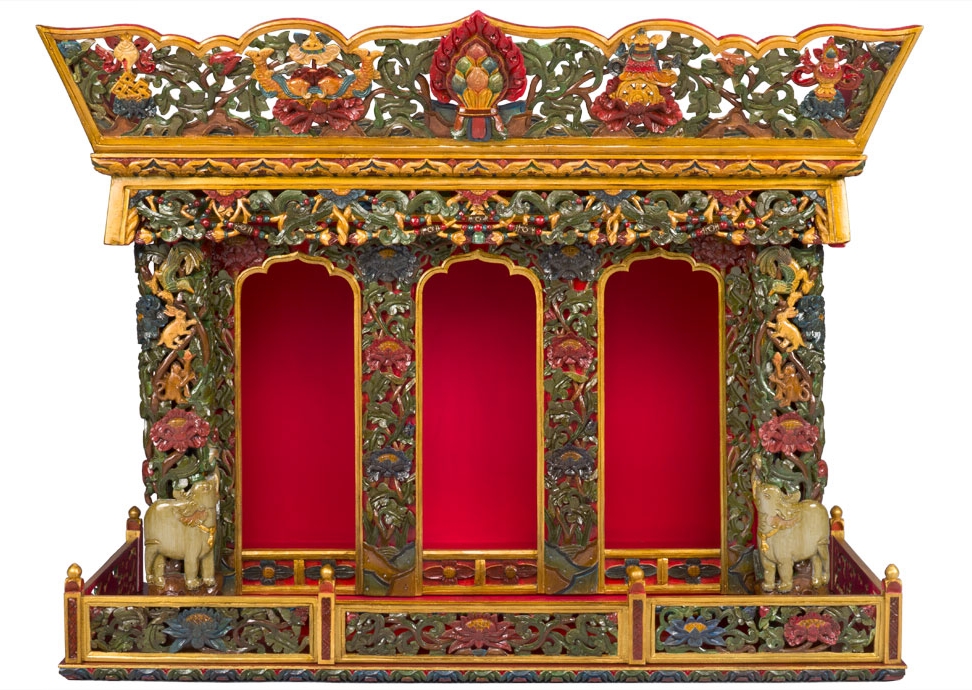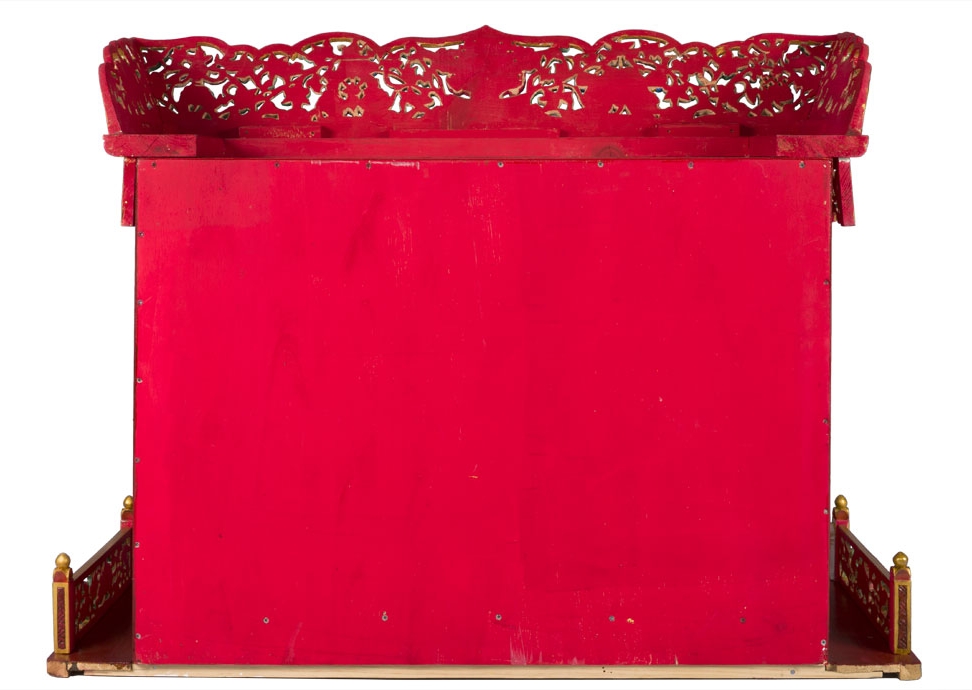
To properly present statues in a private place of worship Tibetan Buddhists create special cabinets called “Dharma displays” or “Dharma placements” (Tibetan: chosham). They usually resemble small temples and can be simply or elaborately made, carved, and painted, as in this carved example specifically commissioned for the Rubin Museum’s shrine room. Their decorative parts are usually carved separately and then assembled.
This chosham has three niches framed by carvings of foliage motifs. The upper part, or crown, is carved with the Three Jewels in the center and the Eight Auspicious Symbols along with a foliage motif extending horizontally. The carved section below the crown represents hanging garlands with strings of jewels and flowers. The outer columns feature foliage and the well-known motif called “the Four Harmonious Friends,” which includes an elephant, monkey, rabbit, and bird standing on each other’s backs. The lowest horizontal section at the front, or “veranda,” is carved with a lotus petal motif.
H 36 1/2 x W 46 x D 17 in.
SC2013.1 ,
- https://dev.rubinmuseum.org/images/content/3595/sc2013.1__zoom.jpg
- https://dev.rubinmuseum.org/images/content/3595/sc2013.1_back__zoom.jpg
- https://dev.rubinmuseum.org/images/content/3595/sc2013.1__zoom.jpg
- https://dev.rubinmuseum.org/images/content/3595/sc2013.1_back__zoom.jpg


